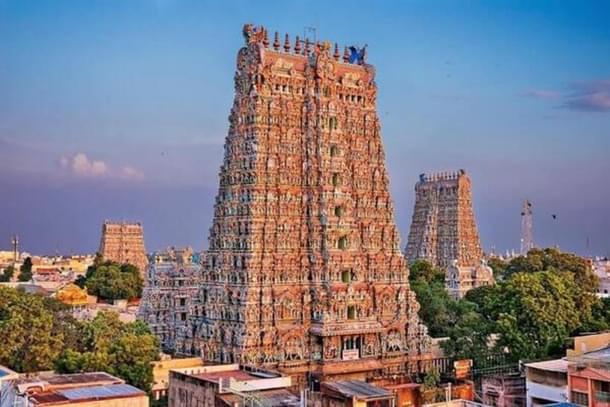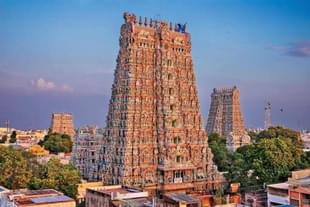Culture
Cultural Entrepreneurship Ecosystem — A Must To Shape Brand India
Arunima Gupta
Apr 29, 2023, 04:36 PM | Updated 04:36 PM IST
Save & read from anywhere!
Bookmark stories for easy access on any device or the Swarajya app.


Culture evolves. It changes with time in its form, expression, interpretation, distribution and consumption.
Our crafts, cuisine, heritage, festivals, and rituals are all reflective of this evolution. Yet, India perhaps remains the only civilization that has seen a cultural continuum since its birth.
One of the key reasons for this is the collective memory and wisdom that has been kept alive and passed directly from one generation to another.
For example, while Kanchipuram may have reduced in its former glory as a vibrant temple town and home to a flourishing community of weavers, 'Kanjeevaram' Sarees continues to be one of the finest handwoven garments.
The techniques, colours and motifs, and the meticulous hard work that goes into weaving one nine-yard saree are unmatchable. So is the story of 'Banarasi' weaves, 'ikat', 'jamdani', 'chanderi' and countless other textile craft forms that have been birthed from India.
Another reason is the presence of India’s vast and unparalleled tangible heritage that displays scientific and architectural brilliance, refined aesthetics and a purpose.
The temple towns of Varanasi, Ujjain and several other in Tamil Nadu were not just pilgrimage sites, but also vibrant and important cultural as well as educational centers.
The complex structures of step wells in Rajasthan and Gujarat–built primarily for the purpose of water conservation–carry along with them intricate carvings that are stories about the political history, customs and ecological practices of the region.
Such examples are aplenty and can be found in every corner of the country.
India has been a cultural and creative powerhouse. It has produced some of the best-quality textiles, perfumes, spices, crafts etc, many of which have also been exported as priced commodities.
We have also shared our intellectual knowledge with the world, be it through Yoga and Ayurveda or the performing arts, or culinary practices.
However, India’s exports of cultural goods have resulted in little economic dividend. For instance, while the global ayurvedic market was valued at $4.62 billion in 2017, India’s share was a meagre $402 million.
Similarly, while the global handicrafts market amounted to $680 billion in 2021, India’s handicrafts export only accounted for $4.3 billion in the same year.
As a consequence, India’s cultural industries have been pushed down the value chain as an exporter of commodities either in the form of unfinished goods or finished products made by low-cost skilled labour.
Similarly, despite having an incredibly beautiful tangible and natural heritage, we have hardly harnessed the potential of tourism to generate economic prosperity and make India an attractive tourist destination. The evidence lies in the fact that a paltry 17.91 million international tourists visited India in 2019.
On the contrary, France, a country six times smaller than India received 90 million international visitors. Even the number of UNESCO World Heritage Sites, at 41, doesn’t do justice to India’s rich and versatile heritage.
Italy, a country eleven times smaller than India, alone has 58 UNESCO World Heritage Sites, the highest in the world.
To upturn this situation, there needs to be an environment and ecosystem that allows India’s cultural enterprises to flourish.
These enterprises must possess a strong understanding of markets, have the ability to innovate and create contemporary products that cater to consumer demands, be strongly plugged into digital supply chains, ensure high-quality standards as well as create intellectual property.
More importantly, these cultural enterprises must offer branded products, services and experiences that add economic value to our culture. Globally competent, financially sustainable and culturally rooted brands will also achieve three critical objectives.
One, cultural enterprises will create employment opportunities and livelihood creation for millions of artisans, local workforces, small business owners and service providers etc. This in turn will contribute significantly to wealth creation at the national level and also give impetus to the Make in India movement.
The recent success story of India’s indigenous toy industry is a case in point. Quality control licenses, financial assistance to toy manufacturers and encouraging new enterprise creation as well as promotion of indigenous toys inspired by history and folklore has served as a game-changer for the toy industry.
While the import of toys has reduced to almost 67 per cent in 2021-22, the exports have increased significantly accounting to a total of USD 326 million in the same year. This has also benefitted almost 12 thousand artisans across 19 toy clusters in India.
Two, these enterprises will contribute and serve as cultural emissaries when present in international markets, by introducing Indian culture, values and practices to a global audience in ways that appeal to their sensibilities.
This will be instrumental in creating greater familiarity and likeliness towards India, thus strengthening our soft power.
One of the most effective ways of achieving this will be through the practice of gastro-diplomacy, wherein Indian culinary entrepreneurs are encouraged to set up businesses abroad and promote authentic Indian cuisine and also our culinary wisdom that ranges from Ayurveda to seasonal food trends.
Lessons can be learnt from the success of the global Thai Campaign that has popularised Thai cuisine across the world, through a well strategized and coordinated effort between the government, entrepreneurs, private funders and corporates.
Three, these cultural enterprises–rooted in Indic heritage, values and traditions while having a strong market focus–will also act as storytellers, talking about the richness and uniqueness of Indian culture.
Using digital and other new-age channels of communication, employing innovative branding strategies, as well as creating aesthetics that truly reflect Indic social and cultural dynamism will position Indian cultural enterprises firmly in competitive markets.
Many international cultural brands that have India-inspired product lines have also shown India’s cultural milieu as part of their advertising.
For example, when the French perfume brand Memo Paris launched Madurai, a perfume with a predominant fragrance derived from Indian Jasmine, they also told the story of Madurai as an ancient temple town and a cultural center, using eye-catching visuals and graphics. Such powerful branding and storytelling remain missing from Indian cultural brands.
It therefore, becomes imperative to build and grow a cultural entrepreneurship ecosystem in India, that enables cultural enterprises to build and scale businesses into successful brands.
This ecosystem must place the cultural entrepreneur at the core, surrounded by stakeholders including corporates and business leaders, mentors and industry experts, academia, incubators and service providers. The process will also open doors for cultural enterprises to get connected to markets and industry networks.
Concomitantly, funding opportunities and access to various sources of funding must be established. Lastly, a policy-level push and research, which aids the government to come out with regulations, conducive schemes and programs for cultural enterprises as well as include cultural entrepreneurship in the practice of diplomacy, is a must.
The custodians of Indian culture have long strived to protect and preserve our heritage, but it is high time that we shift our lenses to focus on promotion and prosperity to ensure the cultural continuum.
To achieve this, we must harness the economic potential of our cultural assets.
This is possible only through the creation of successful cultural enterprises, which requires mentoring, funding, branding and regulatory support. An ecosystem must be developed to serve as a catalyst for empowering India’s cultural enterprises that will eventually shape Brand India.
Arunima Gupta is Principal at the Network of Indian Cultural Enterprises. She is an alumnus of Leiden University, the Netherlands and Lady Shri Ram College for Women, Delhi University. Prior to joining NICE, Arunima headed the Centre for Strategic and Foreign Relations at Vision India Foundation. She tweets @ArunimaGupta03.





